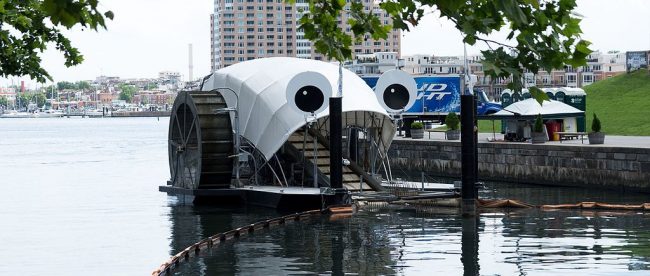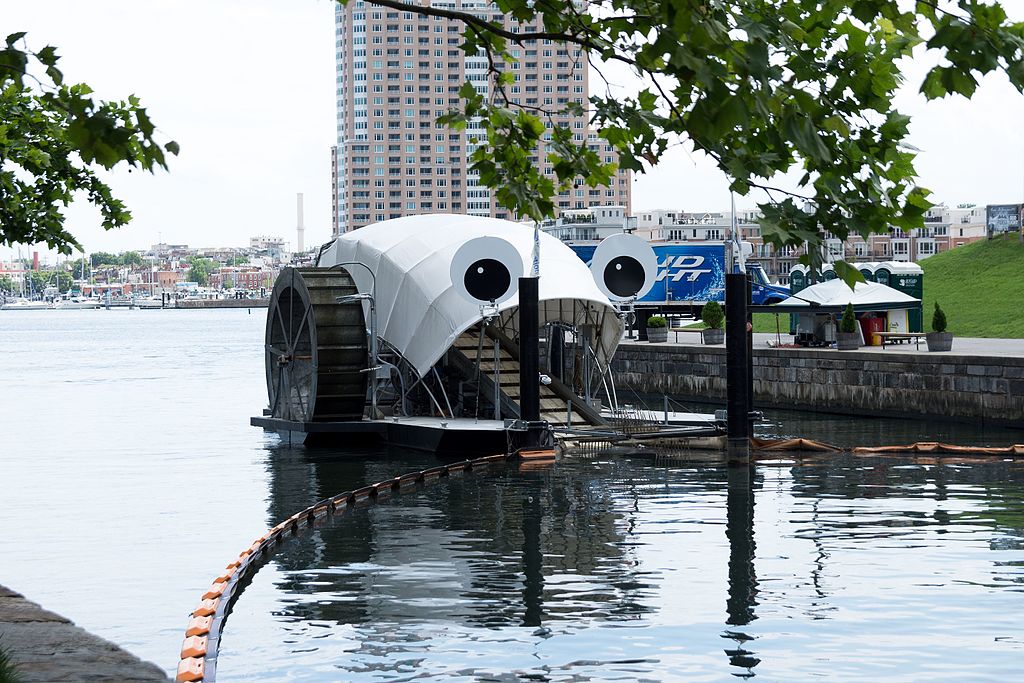Putting a Happy Face On Trash

For many cities, garbage is an unyielding problem. We make a lot of it and often, there’s nowhere for it to go. Add in some bad littering habits and some waterways and you have a bad mix. Rivers, which should be flowing with clean, clear water, are instead rendered into a murky stew of refuse. Take, for example, the waterways of Baltimore, Maryland. In a 2019 New Yorker article (here), John Kellett, a former director of the city’s maritime museum, noted that “when it rained, there was a river of trash flowing down” into the harbor. That’s bad.
But Kellett didn’t get upset. Instead, he put on a happy face. A really big happy face in the middle of a stream that feeds into the harbor. You can take a look, below.

That’s the Inner Harbor Water Wheel, officially. But since it joined the waterways in the spring of 2014, it’s had a much friendlier name: everyone calls it Mr. Trash Wheel.
Mr. Trash Wheel is a “solar- and hydro-powered trash interceptor,” In the words of National Geographic. Basically, it sits in Jones Falls River, a stream leading to the harbor, and collect garbage before the trash makes its way downstream. Nat Geo describes the magic behind the gizmo:
The contraption works by drawing power from solar panels and the current of Jones Falls River to turn a waterwheel, which in turn powers a conveyer belt. Containment booms direct the trash towards the conveyer belt, which then drops the debris into a waiting Dumpster. That bin sits on its own platform and can be floated out when it’s time to change it.
(You can see a video of Mr. Trash Wheel in action here.)
The collected trash is brought to a waste reclamation plant where it is incinerated, with the resulting energy added to the Maryland power grid. As of this writing, per the wheel’s website (it’s literally MrTrashWheel.com), the water wheel has collected more than 1,500 tons of garbage, including more than 11 million cigarette butts and a million plastic bottles. And there have been a handful of unique grabs, too; per Nat Geo, “some unusual things turn up occasionally, like a live ball python—which the National Aquarium in Baltimore helped rescue— and a keg, which was returned for a deposit. Once, an acoustic guitar in pretty good shape turned up [and an employee kept it for himself].” (No, the snake wasn’t living in the water natively; officials told the Baltimore Sun that it was probably “somebody’s pet that either escaped or was set free or was abandoned by its owners.”)
The trash wheel has been so effective that the family is expanding. Baltimore has added two more, one named Professor Trash Wheel in December 206, and in June 2018 named Captain Trash Wheel.
Bonus fact: While Kellett put eyes on Mr. Trash Wheel, sometimes, you’ll see faces in objects even when the designer (or nature) didn’t intend. (Here’s an example.) There’s a term for that phenomenon — pareidolia. It means “the tendency to perceive a specific, often meaningful image in a random or ambiguous visual pattern.”
From the Archives: Garbage City: A place in Egypt where trash is the economy.
